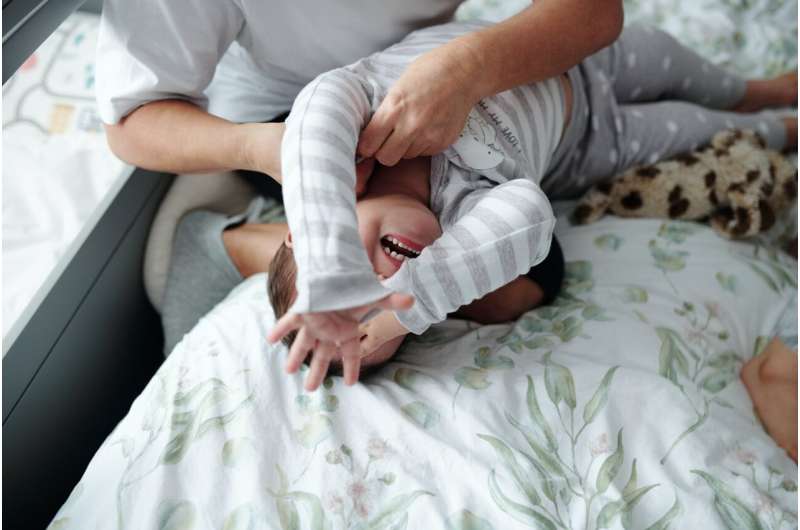Understanding the Difference Between Tantrums and Meltdowns in Children

If you’re a parent or caregiver, chances are you've experienced the challenge of managing a child's emotional outburst. Kids often throw tantrums or have meltdowns, but understanding the difference between these two behaviors is crucial for responding effectively and supporting healthy emotional development.
What is a Tantrum?
A tantrum is primarily a behavioral response. It usually occurs when a child has learned that certain actions—like crying, screaming, hitting, or yelling—can help them achieve a specific goal, often to get attention or material items. These behaviors are a natural part of childhood learning; children are still mastering emotional regulation. When a child throws a tantrum, they might be seeking to control a situation or express frustration.
For example, a child might scream and cry when told to stop playing with a toy, because they want to continue playing. If a parent responds by giving in or negotiating during the tantrum, this can reinforce the behavior, making it more likely to recur.
What is a Meltdown?
A meltdown, on the other hand, is linked to emotional dysregulation. It occurs when a child's ability to manage their distress is overwhelmed due to internal or external factors, such as tiredness, hunger, overstimulation, or sensory overload. Unlike tantrums, meltdowns are not deliberate attempts to manipulate but a sign that the child's nervous system is overwhelmed.
During a meltdown, a child may exhibit intense crying, screaming, hitting, or other vigorous behaviors that are hard to calm. They often cannot quickly de-escalate because they are overwhelmed, and offering them what they want usually doesn’t help. Children with neurodevelopmental differences like autism or ADHD may be more prone to meltdowns due to difficulties with emotional regulation.
How to Respond?
Effective responses involve empathy and understanding. Labeling the child's feelings and showing compassion can help de-escalate emotions. For example, saying, "I see you’re upset because you don’t want to stop playing," validates their feelings.
It’s also important to set boundaries. If the behavior involves hitting or throwing objects, calmly state, "You can be upset, but hitting is not okay." When safety is a concern, physical safety measures should be prioritized, and reassurance offered.
What to Avoid
Avoid harsh reactions, yelling, or physically punishing a child during these episodes. Distraction techniques during a meltdown are usually ineffective and can worsen the situation. Recognizing that physical punishment and shouting can have long-term negative effects on mental health is vital. Instead, focus on creating a safe environment and supporting the child's emotional needs.
Prevention and Support
While it’s impossible to prevent all tantrums and meltdowns, consistent positive reinforcement and praising appropriate behavior can reduce their frequency. Building a strong, trusting relationship with your child encourages open communication.
If you feel overwhelmed, remember to practice self-care strategies—deep breaths, pausing before reacting, and ensuring your own needs are met. Recognizing that both tantrums and meltdowns are part of normal child development can foster patience and compassion.
Summary
Understanding that tantrums are behavioral while meltdowns stem from emotional dysregulation can help caregivers respond more effectively. Providing empathy, setting boundaries, and avoiding punitive measures promote healthier emotional growth and stronger parent-child relationships.
Stay Updated with Mia's Feed
Get the latest health & wellness insights delivered straight to your inbox.
Related Articles
Cross-Cultural Insights Reveal Limitations of Western-Centric Autism Communication Understanding
Recent cross-cultural research challenges Western-centric views of autism communication, emphasizing the importance of cultural sensitivity and neurodivergent perspectives in diagnosis and understanding.
New Research Offers Strategies to Enhance Communication Success in Autistic Adults
Recent research from Drexel University highlights effective strategies to support communication in autistic adults, emphasizing understanding, accommodation, and inclusion to improve quality of life.
Tailored Alcohol Interventions Needed for Latinx Sexual Minority Youth, Study Finds
A new study highlights the need for culturally tailored alcohol interventions for Latinx sexual minority youth, who often use alcohol to cope with unique social stressors and discrimination. The research underscores the importance of targeted strategies to improve health outcomes for these vulnerable groups.
Comprehensive Study Reveals the Multiple Effects of COVID-19 School Closures on Youth Well-Being
A groundbreaking international study explores how COVID-19 school closures affected adolescent well-being across health, safety, learning, and social connections, highlighting the need for holistic policies to support youth in future crises.



